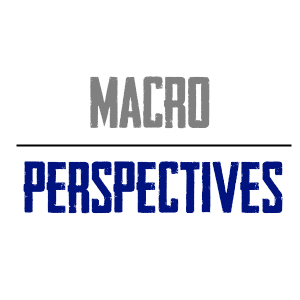As a market practitioner who reads way too much academic economics and finance I often find myself disagreeing with theoretical perspectives. This is the result of this strange disconnect on Wall Street where economists and financiers are often segregated. Although finance and economics overlap in many ways they are viewed as two distinctly different worlds. This creates a huge gap between theory and reality because the academic economists are often constructing theory in an untestable theoretical world which influences the financiers who are trying to construct products and services that can be served to the real world.
I got to thinking about this as I was reading this very good post by Ben Carlson who cites David Rosenberg discussing his shift from being a pure economist to becoming a strategist:
The whole life of a portfolio manager, their brain, is one giant distribution curve of outcomes. I’ve learned more in the past six years at Gluskin Sheff on the buy side, as a strategist and economist, than the previous twenty-two combined [in various sell side roles]. Because I figured out how to produce a forecast that’s meaningful for somebody who manages money for a living.
This makes perfect sense to me. I have basically traversed this business in the opposite direction over the years. I started as a market practitioner and have increasingly learned the economics as I’ve gone along. While there’s been some blending of the two worlds in the last 20 years there is still a tremendous divide. The theoretical work that underpins so much of modern finance and economics does not mesh with reality.
The most glaring example of this in the last 7 years was QE and how economists approached it. There were two dominant views on QE. One said QE would create sky high inflation because the excess reserves would be lent out from the banks (this was mainly an Austrian economics view). The other view said banks would hold onto the excess reserves because of interest on excess reserves or because of the Liquidity Trap thinking (this was the prominent academic economist view). The third view was the one I held which said that banks don’t lend reserves in the first place so QE won’t do what many think and we have to assess the economy and the markets based on other factors. As I stated early on the money multiplier theory was a myth all along and since then several central banks have come out confirming this thinking. But countless numbers of investors were misled because the two dominant theories didn’t mesh with reality.
I’ve tried to blend the worlds of economics and finance across my work in such a way that the theoretical economics is consistent with operational realities. But there is still a tremendous amount of work to be done.
Mr. Roche is the Founder and Chief Investment Officer of Discipline Funds.Discipline Funds is a low fee financial advisory firm with a focus on helping people be more disciplined with their finances.
He is also the author of Pragmatic Capitalism: What Every Investor Needs to Understand About Money and Finance, Understanding the Modern Monetary System and Understanding Modern Portfolio Construction.

